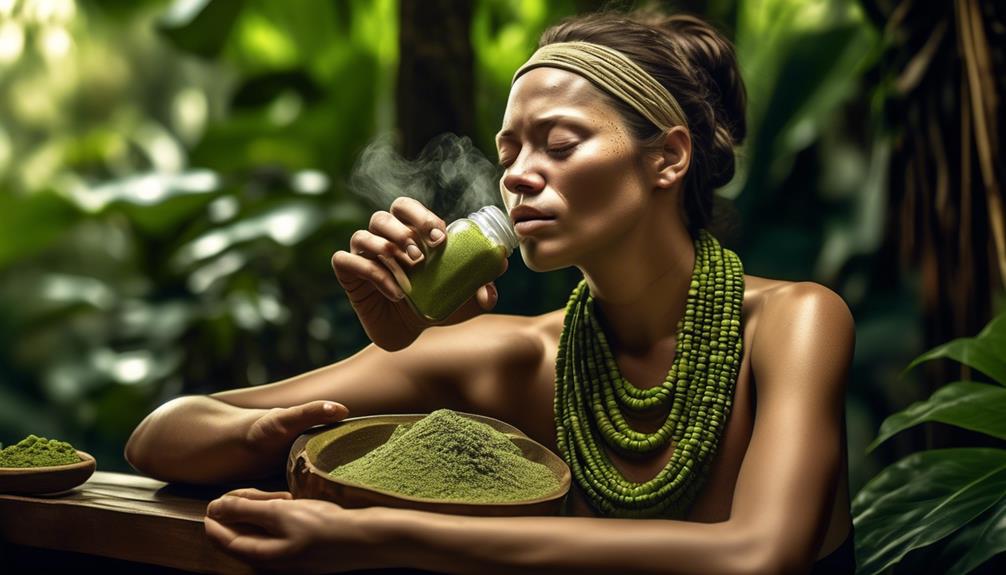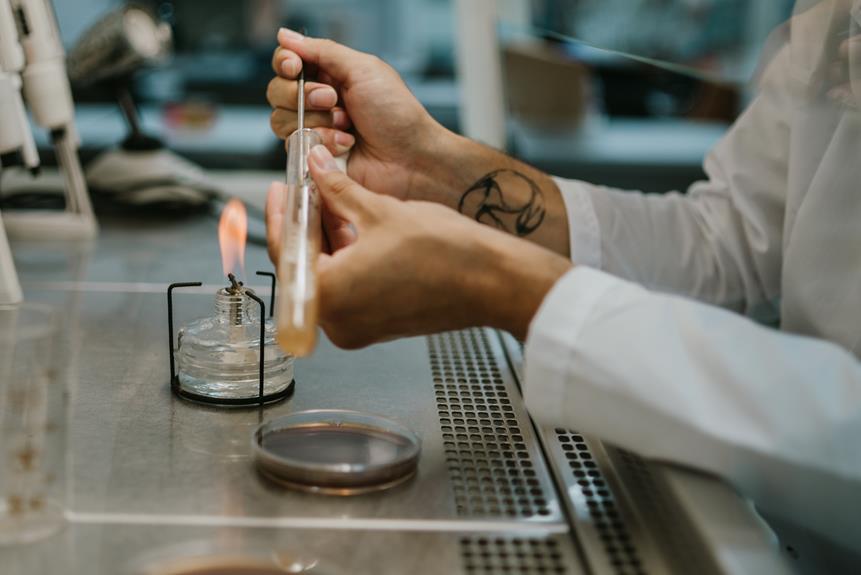Are you looking for a natural way to relax and enhance your mood without resorting to prescription medications or alcohol? You might be skeptical about herbal drinks like kava and kratom, but before you dismiss them, consider their long history of traditional use and the potential benefits they may offer. These beverages have gained popularity for their ability to promote relaxation and provide a sense of calm, making them an intriguing alternative for those seeking a natural remedy. But there's more to the story, and as we delve into the origins, health benefits, and potential risks associated with kava and kratom, you'll discover why these drinks have piqued the interest of many.
Origins of Kava and Kratom
The origins of Kava and Kratom can be traced back to the tropical regions of Southeast Asia and the Pacific Islands. These two plants have been used for centuries by indigenous communities for their medicinal and recreational purposes.
Kava, also known as Piper methysticum, has its roots in the Pacific Islands, particularly in Fiji, Vanuatu, and Tonga. The plant belongs to the pepper family and is cultivated for its root, which is used to make a traditional drink. The roots are harvested, ground, and mixed with water to create a thick, muddy beverage that is known for its relaxing and calming effects. Kava has been traditionally consumed during social gatherings and ceremonies, often used to promote a sense of unity and belonging among the community members.
On the other hand, Kratom, scientifically known as Mitragyna speciosa, is native to Southeast Asia, specifically Thailand, Malaysia, and Indonesia. The leaves of the Kratom tree contain alkaloids that produce various effects when consumed. In traditional cultures, Kratom leaves were chewed or brewed into a tea to increase energy levels, relieve pain, and enhance mood. It was often used by laborers and farmers to boost productivity and endurance during long working hours.
Both Kava and Kratom have gained popularity in recent years, attracting a diverse range of individuals seeking alternative remedies or recreational experiences. Many people are drawn to the sense of belonging and community that these plants have historically provided. As the demand for natural remedies and social connections increases, the origins of Kava and Kratom continue to be celebrated and explored.
Health Benefits of Kava and Kratom
Promoting relaxation and providing potential relief from anxiety and depression, kava and kratom offer a natural alternative to pharmaceutical options with their calming effects and mood-elevating properties. These natural ingredients have been used for centuries and are increasingly gaining popularity in today's wellness culture. Here are some health benefits of kava and kratom:
- Relaxation and Mood Enhancement: Kava and kratom have the potential to induce a state of tranquility and well-being. Kava, with its ceremonial history in Pacific islands, is known for its calming effects and ability to promote relaxation. Kratom, when taken in low doses, can act as a stimulant, enhancing energy, alertness, and producing euphoric effects.
- Anxiety and Depression Relief: Both kava and kratom have been used to ease symptoms of anxiety and depression. Their calming properties can help alleviate stress, promote a sense of calmness, and enhance mood, providing potential relief from these mental health conditions.
- Pain Management: Kava and kratom have also been traditionally used for pain management. They possess analgesic properties that can help ease discomfort and provide a natural alternative to pharmaceutical painkillers.
- Alternative to Traditional Beverages: Kava and kratom are legal in certain states and are increasingly being positioned as alternatives to traditional beverages like alcohol, coffee, and tea. These natural ingredients offer a unique and calming experience without the side effects commonly associated with other drinks.
- Rigorous Testing: It is important to note that the safety and efficacy of kava and kratom products can vary. To ensure quality and potency, it is recommended to choose products that have undergone rigorous testing and are sourced from reputable manufacturers.
Incorporating kava and kratom into your wellness routine can provide potential health benefits, offering a natural alternative to pharmaceutical options. However, it is always advisable to consult with a healthcare professional before incorporating any new supplements into your routine.
Potential Risks and Side Effects

If you're considering incorporating kava and kratom into your wellness routine, it's important to be aware of the potential risks and side effects associated with these natural ingredients. While kava and kratom have been praised for their potential health benefits, it is crucial to understand the potential risks they carry.
One potential risk is liver damage. Both kava and kratom are metabolized in the liver, which means that high or concentrated doses can put strain on this vital organ. It is essential to use these substances responsibly and not exceed recommended dosages to minimize the risk of liver damage.
Another concern is the interference with other medications. Kava and kratom can interact with certain medications, causing adverse effects or reducing their effectiveness. If you are taking any prescription or over-the-counter medications, it is important to consult with a healthcare professional before incorporating kava or kratom into your routine.
Regular use of kava can lead to physical dependence. This means that your body may become reliant on the substance, and stopping its use may result in withdrawal symptoms. Some individuals may also experience health issues such as swollen faces and rashes with prolonged kava use.
Similarly, regular use of kratom can lead to physical dependence, similar to opioids. This can result in withdrawal symptoms like flu-like symptoms, depression, and nausea when kratom use is discontinued.
It's important to note that both kava and kratom have the potential to cause addiction. If you have a history of substance abuse or are currently in recovery, it is crucial to exercise caution and seek medical advice before consuming these substances.
Cultural Significance of Kava and Kratom
With a history dating back thousands of years, kava and kratom have become deeply ingrained in the cultural traditions of their respective regions. These two plants, native to Southeast Asia, hold immense cultural significance and play a vital role in the social fabric of their communities. Here are five key aspects of the cultural significance of kava and kratom:
- Ceremonial Use: Kava has been used ceremonially in Fiji, Hawaii, and other Pacific islands for over 3,000 years. It is often consumed during important rituals and gatherings, symbolizing unity and fostering a sense of community.
- Medicinal Properties: Kratom, known for its stimulating and pain-relieving effects, has long been used in traditional medicine practices in Southeast Asia. It is considered a natural remedy for various ailments and is highly valued by the local population.
- Alternative to Alcohol: Both kava and kratom have gained popularity as alternatives to alcohol and other beverages. They provide a social lubricant without the negative effects associated with excessive alcohol consumption, making them a preferred choice for cultural and social gatherings.
- Communal Experiences: The cultural significance of kava and kratom is evident in the rise of kava bars. These establishments offer a space for people to come together, share stories, and forge connections while enjoying the calming effects of these drinks.
- Cultural Preservation: By continuing to incorporate kava and kratom into their traditions, communities are able to preserve their cultural heritage. These plants serve as symbols of identity and belonging, reinforcing cultural pride and a sense of belonging.
The cultural significance of kava and kratom goes beyond their botanical properties. They have become symbols of unity, healing, and social bonding, providing a sense of belonging and connection to their respective communities.
Can Kava and Kratom be Mixed in a Drink?
It’s essential to follow kratom tea recipe instructions when making a drink. Mixing kava and kratom in a beverage requires attention to proper measurements and preparation to ensure a balanced blend. By following kratom tea recipe instructions, you can create a harmonious drink that incorporates both kava and kratom seamlessly.
Serving and Consumption of Kava and Kratom

When it comes to the serving and consumption of kava and kratom, both these botanicals have their own unique ways of being enjoyed. Kava is typically served as a drink, often mixed with water, and derived from the root of the kava plant. On the other hand, kratom is usually consumed as a brewed tea or in capsule form.
If you're interested in trying kava, you can visit kava bars where this traditional beverage is served. The serving size for kava is around 2-4 tablespoons of powdered root per cup of water. It is important to note that kava has a distinct earthy taste, which can be an acquired taste for some individuals. However, kava enthusiasts appreciate its calming effects and use it as a social lubricant or for relaxation purposes.
When it comes to kratom, the typical serving size for kratom tea is 2-4 grams. Kratom tea is made by brewing the leaves of the kratom plant and can be enjoyed hot or cold. Some people also opt for kratom capsules, which provide a convenient and easy way to consume kratom.
While kava is traditionally consumed in social and ceremonial settings, often with rituals, kratom is commonly used for its stimulating and pain-relieving effects. The effects of kava are usually felt within 20-30 minutes of consumption and can last for a few hours. In contrast, kratom's effects can be felt within 5-10 minutes and may last for 2-5 hours.
It is important to consume both kava and kratom responsibly and be aware of potential side effects and interactions with other substances. Additionally, it is always recommended to consult with a healthcare professional before trying any new botanical or supplement.
Frequently Asked Questions
What Is Kava and Kratom Used For?
Looking for herbal remedies that can help you relax and relieve stress? Kava and kratom might be just what you need. These natural substances have been used for centuries and have cultural significance in many communities. They offer potential health benefits, such as anxiety and depression relief, and can promote a sense of calmness and well-being. However, it's important to be aware of potential risks and side effects, and make sure to use them responsibly.
What Is the Lawsuit About Kava and Kratom?
The lawsuit surrounding Kava and Kratom is causing quite a controversy. It's a legal battle that has caught the attention of many. People are concerned about the potential health and safety risks associated with these drinks. The lawsuit aims to address these concerns and ensure the well-being of the community. It's an ongoing issue that needs to be resolved for everyone's sake. Stay informed and be part of the conversation to foster a sense of belonging.
Is Kava Considered a Drug?
Kava is not considered a drug, and it's legal in all 50 states. It's derived from the root of the kava plant and has been used ceremonially for thousands of years. Kava can induce relaxation and elevate mood, making it a popular choice to ease anxiety. Many people find comfort in consuming kava as an alternative to alcohol, coffee, tea, or energy drinks. Its legality, effects, and consumption make it an intriguing option for those seeking a natural way to relax and unwind.
What Is a Kava Drink?
A kava drink is a traditional beverage that is made from the root of the kava plant. It has been used for centuries in various Pacific island cultures for its relaxing and mood-elevating properties. To prepare a kava drink, the root is pulverized into a powder and mixed with water. While kava is known to have many benefits, such as promoting calmness and reducing anxiety, it is important to be aware of potential side effects and the fact that it can interact with certain medications.










